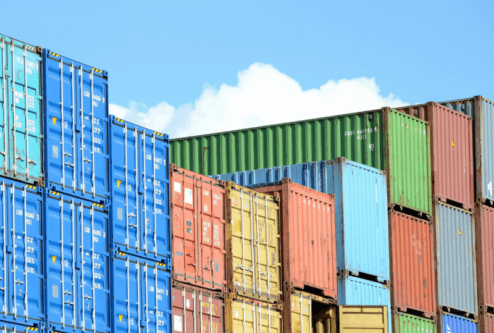
Non-Tariff Barriers: An In-Depth Look at Their Role in Global Trade
- January 20, 2025
In the realm of international trade, tariffs have long been the focus of attention when discussing trade barriers. However, as trade negotiations have evolved, attention has increasingly turned to non-tariff barriers (NTBs). Unlike traditional tariffs, which are taxes imposed on imports and exports, non-tariff barriers are restrictive regulations and policies other than tariffs that countries use to control the amount of trade across their borders. While not immediately obvious, these barriers can be just as, if not more, impactful than tariffs in shaping global trade dynamics.
Understanding Non-Tariff Barriers (NTBs)
Non-tariff barriers are policies or regulations that countries implement to restrict imports or exports, affecting the flow of goods and services in ways other than through tariffs. These measures can take many forms and are often used to achieve various economic, political, or social goals. While they are often considered less transparent than tariffs, NTBs can significantly affect international trade by increasing costs, limiting market access, or creating uncertainties for businesses and consumers alike.
Types of Non-Tariff Barriers
Non-tariff barriers come in various forms, and some are more common than others. These measures include:
- Quotas:
- Quotas impose limits on the amount of a specific product that can be imported or exported during a given time period. By restricting the supply of certain goods, quotas can protect domestic industries from foreign competition, maintain stable market prices, and safeguard local jobs.
- Subsidies:
- Governments may provide financial support to domestic industries in the form of subsidies, grants, or tax relief, making their products cheaper in the international market. This can lead to an unfair competitive advantage for exporters, distorting global trade by making imported goods more expensive in comparison.
- Import Licensing:
- Import licensing requires that businesses obtain permission before importing certain goods. These licenses are often issued only under specific conditions, such as meeting domestic regulatory requirements. The process can create delays and administrative burdens, which act as a deterrent to international trade.
- Customs Procedures and Documentation:
- Complex customs procedures and excessive documentation requirements can increase costs and delay shipments. These barriers may include detailed inspections, certification requirements, and other bureaucratic hurdles that discourage trade, especially for smaller exporters who may not have the resources to navigate such processes.
- Standards and Regulations:
- Stringent safety, health, or environmental standards for products—such as food, pharmaceuticals, or vehicles—are another form of non-tariff barrier. While these standards are often aimed at protecting consumers and the environment, excessively strict or inconsistent standards between countries can restrict market access, particularly for exporters who are unable to meet these standards.
- Antidumping Measures:
- Countries may impose antidumping duties when they believe that a foreign company is selling goods in their market at below-cost prices, often as a way of gaining market share. While antidumping measures are meant to protect domestic industries, they can be used strategically to limit foreign competition, often based on subjective criteria.
- Voluntary Export Restraints (VERs):
- These are agreements between exporting and importing countries where the exporter agrees to limit the quantity of goods sold to the importing country. VERs are often negotiated in response to political pressure from the importing country and can distort market access and trade flows.
- Technical Barriers to Trade (TBT):
- These include regulations and standards for products and services, such as product safety standards, labeling, and certification requirements. Although these standards are often necessary to ensure consumer safety and environmental protection, they can also be a form of protectionism if they are unnecessarily restrictive or are applied inconsistently across countries.
- Sanitary and Phytosanitary (SPS) Measures:
- These measures concern food safety, animal and plant health standards. While they are designed to protect consumers and ecosystems, overregulation in these areas can hinder trade, particularly in agricultural products. For example, bans on imports of specific food products due to concerns over disease or pests can serve as a form of trade restriction.
Why Do Countries Use Non-Tariff Barriers?
Countries utilize NTBs for a variety of reasons, often balancing economic and political objectives:
- Protection of Domestic Industries:
- One of the primary motivations behind NTBs is to protect local industries from foreign competition. By imposing quotas, high standards, or subsidies for domestic producers, countries can shield vulnerable sectors of their economies from cheaper or more competitive foreign products.
- National Security Concerns:
- Governments may use non-tariff barriers for security reasons, such as restricting the import of sensitive technologies, defense-related products, or goods from certain countries. These measures are meant to protect national interests and ensure that strategic industries remain within domestic control.
- Environmental Protection:
- Countries often impose strict environmental standards on products to protect natural resources or promote sustainability. While these measures can promote environmental health, they may also act as a barrier to trade if they are excessively stringent or vary significantly between countries.
- Public Health and Safety:
- NTBs like sanitary and phytosanitary regulations are implemented to ensure the safety of food, medicines, and other products. These are critical for consumer well-being but may be used in ways that restrict market access for foreign producers who cannot meet these standards.
- Political and Economic Negotiations:
- Sometimes, non-tariff barriers are used as a tool in negotiations. Countries may impose or threaten to impose NTBs as part of trade talks or in retaliation for unfair trade practices by other nations. For instance, an antidumping measure might be introduced in response to what a country perceives as unfair pricing by a competitor.
The Impact of Non-Tariff Barriers on Global Trade
While non-tariff barriers may serve important protective functions, they can also have negative consequences for global trade:
- Increased Costs:
- NTBs often increase the cost of doing business for both exporters and consumers. Compliance with lengthy documentation requirements, adherence to differing product standards, and delays at customs can all add substantial costs to the trade process.
- Reduced Market Access:
- By imposing restrictive regulations and standards, non-tariff barriers limit the ability of foreign producers to enter new markets. This is especially challenging for small and medium-sized businesses that may not have the resources to meet complex compliance requirements.
- Market Distortions:
- NTBs can lead to trade distortions by creating unfair competitive advantages for domestic producers. Subsidies, for example, may lower the price of domestic goods, while import quotas can create artificial scarcity, leading to higher prices for consumers.
- Increased Trade Tensions:
- When non-tariff barriers are used as a form of protectionism, they can lead to trade disputes and tensions between countries. The World Trade Organization (WTO) and other international bodies often intervene to resolve disputes over NTBs, but these conflicts can strain diplomatic relations and hamper global trade cooperation.
Conclusion
Non-tariff barriers (NTBs) are a significant factor in the global trade landscape. Although they can serve legitimate purposes such as protecting public health, promoting environmental sustainability, and ensuring national security, they also have the potential to distort market access and raise trade costs. As international trade continues to grow, it is crucial for countries to balance the use of NTBs with the need for fair and transparent trade practices. Efforts to harmonize regulations and reduce the complexity of NTBs will be vital in creating a more open and accessible global marketplace for businesses and consumers alike.


